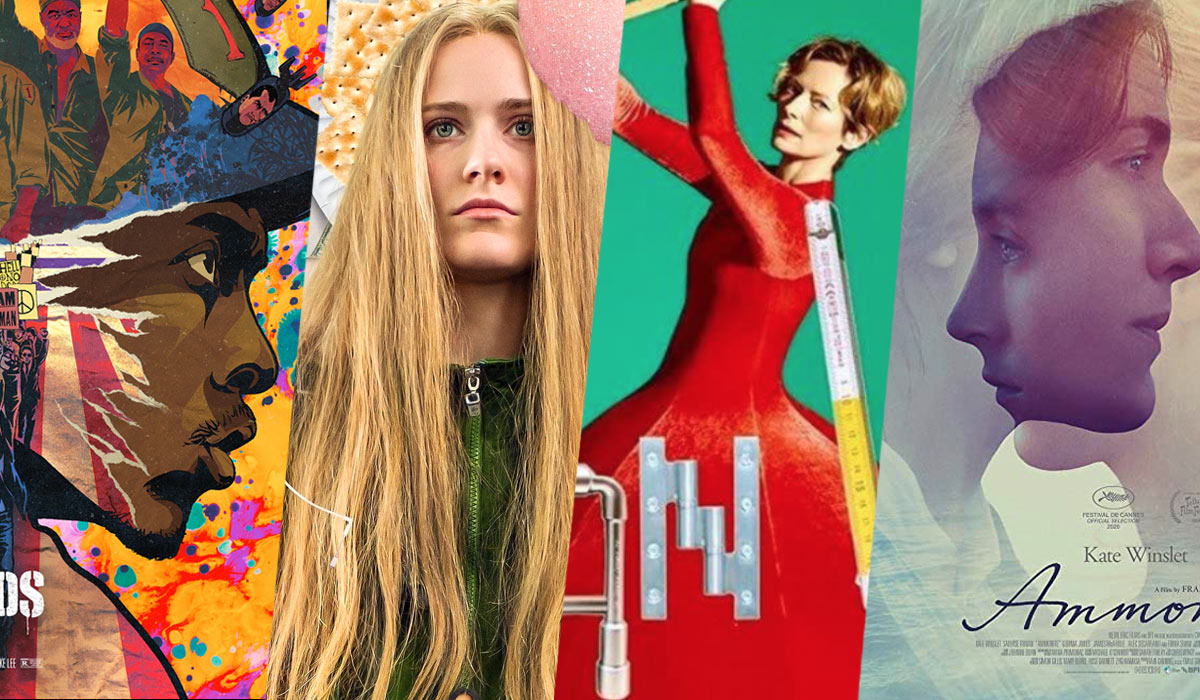We have, it’s safe to say, had a whole lot less to look at this year when it comes to the world of cinema. So many parts of our traditional filmgoing experience have been snatched away, for now, while so many of us wait at home for the whole thing to be done. This has meant a lot of things on a lot of levels, but crucially, for this exercise, it means we’ve been staring at the same four walls of our home for quite some time now. And so, film posters matter more than ever – first off, to redirect your eyes towards some new colors, something riveting, exciting, exotic even, and, hey, maybe even to get a little inspiration to redecorate those walls for as long as the pandemic will keep us stuck behind them.
READ MORE: The Best Trailers Of 2020
This year might have taken so much from us. Still, it also gave us another year full of brilliant art and bold designs, coming from the most visionary filmmakers and illustrators and artists proving that the world keeps on spinning, movies will keep being made, and celebrated. So it feels now more than ever important to cherish what we do have while we wait for the rest. Something simple, something easy. Inviting colors and handsome movie stars. Smart taglines and clean line designs.
READ MORE: The Best Horror Films Of 2020 (So Far)
It’s time to reflect, as we enjoy so much around this time of year, on the Best Movie Posters of 2020. There are here, naturally, some movies that are yet to see the light of day – but, if anything, that proves even more so that the poster has been deemed a success. These choices are subjective, as ever – this is where the conversation starts, not where it ends. May your eyes and minds enjoy.
Click here to follow along with our various Best of 2020 lists.
“Mank”
David Fincher’s wry portrait of Tinseltown, zooming in on the journey of one Herman J. Mankiewicz to finish writing the screenplay for Orson Welles’ “Citizen Kane,” paints his subjects with period-specific extravagance without ever losing sight of their sharp flaws and inconsistencies. The poster reflects this sense of bitter nostalgia, too: the men and women of the 1930s look up towards Mankiewicz with a mixture of disdain and concern, as he, played with uncanny vibrancy by Gary Oldman, lifts his glass – this isn’t the first or last time you’ll see him toasting with a drink. The out of focus backdrop and the blurry brushstrokes give the poster something of a romantic feel – but it’s intoxicating more than it is idyllic.

“Ema”
What can you do when the world is on fire except bask in its glow? Pablo Larrain’s incendiary dance drama “Ema” is as much about motherhood as sensuality, about dance and fire, and loyalty and chaos. The poster reflects this beautifully: a nondescript magenta orb burns bright, as Mariana Di Girolamo and Gael Garcia Bernal stand towards one another as Ema and her partner Gaston. She’s looking down, hands on her belly. He doesn’t know where to look. Something has been lost, bridges were burnt, and yet they must still stand facing one another. It’s mysterious, and magnetic.

“Ammonite”
More than a traditional love story, “Ammonite” focuses on the intersection of two women’s lives, isolated and exhausted by their individual emotional labor. Francis Lee directs a chilly portrait of fleeting devotion. So the elegant poster letting the profiles of stars Kate Winslet and Saoirse Ronan meet perfectly telegraphs the hazy connection between the two, with only their eyes feeling particularly piercing. Waves rise to Winslet’s neck, an image of the British seaside that surrounds their story. The simplicity of having both women exist as equally powerful halves rather than entwining confusing them too deeply speaks to the film’s ambition to preserve independence as something to be nurtured and protected. They can connect, but they will never fully merge.

“I’m Thinking of Ending Things”
If you want an alternative poster done right, you’ve got to ask Akiko Stehrenberger to design it. Charlie Kaufman gave Netflix an ice-cold relationship drama, ready to break your heart and melt your mind all at once. And Stehrenberger focuses on the film’s two most striking ingredients: Jessie Buckley, who plays the woman thinking of ending things and guiding us through a broken reality; and a thick coat of snow. Over her eyes, crawling up her arms, falling over the width of her slippers, covering the floor. What you know of yourself becomes quickly buried in this film, hidden under an opaque layer of exhaustion and desperation. A woman sits for so long, without feeling, without movement, without fire, that snow becomes part of her. Immortalized like a painting, a simple all lower-case title in the top left corner, it’s perfect. She’s thinking of ending things, and so nothing else will grow, or breathe, from here on out.

“The Human Voice”
It’s no secret now that Pedro Almodovar colors his movies with the vibrancy of his feelings – always working in vivid pinks, blues, yellows, and greens – but for his Tilda Swinton-starring “The Human Voice,” the Spanish filmmaker opts for something more striking than ever. Swinton plays a woman wrestling through the mechanics of a breakup in the caustic Jean Cocteau adaptation, and the poster design here takes the concept of mechanics quite literally. Against the grass-green backdrop, Swinton wields an ax, looking towards the camera, as several tools spell out her director’s name, the film’s name, and hers. It’s striking, playful, and effective – but also piercing if you don’t approach it with caution.






